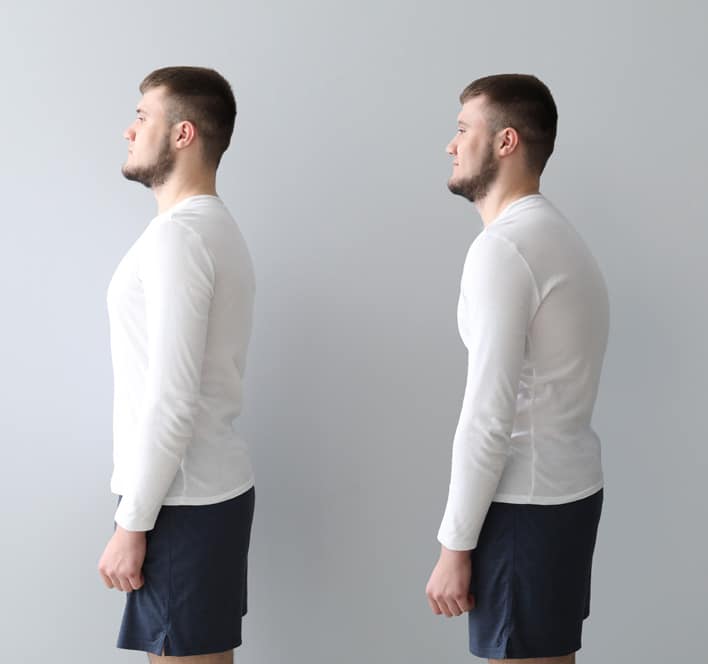Ankylosing spondylitis (AS) is a chronic inflammatory disease that primarily affects the spine, causing pain and stiffness from the neck down to the lower back. It can also lead to vertebrae fusion, resulting in a less flexible spine and a hunched-forward posture. While many individuals with AS manage their symptoms through medication and physical therapy, there are cases where surgery becomes necessary to alleviate severe pain or correct significant deformities.
At NJ Spine & Orthopedic, we understand the profound impact AS can have on your daily life. Our dedicated team is here to provide comprehensive care and advanced surgical options to those who need them. We offer minimally invasive procedures designed to reduce recovery time and improve outcomes, allowing you to return to your normal activities as soon as possible.
Recognizing the Need for Surgery
Not all individuals with AS will require surgery. However, there are specific scenarios where surgical intervention becomes essential. Severe pain that does not respond to conservative treatments is a primary indication for surgery. When medications and physical therapy fail to control pain, surgical options may be considered to provide relief and improve the quality of life.
Another situation that may necessitate surgery is the presence of significant spinal deformities. AS can cause the spine to curve forward, resulting in a hunched posture known as kyphosis. This can interfere with daily activities and cause breathing difficulties. Surgical procedures can correct these deformities, restoring a more natural posture and improving function.
In rare cases, AS can lead to complications such as spinal fractures or severe neurological deficits. These conditions may require emergency surgical intervention to stabilize the spine and prevent further damage. Identifying these critical scenarios early and seeking timely surgical care can be crucial in managing AS effectively.
Types of Surgical Procedures for AS
Several surgical options are available for managing AS, each tailored to the specific needs and conditions of the patient. One common procedure is spinal osteotomy, which involves cutting and realigning the bones to correct deformities and improve posture. This procedure can significantly enhance mobility and reduce pain.
Spinal fusion is another surgical option often used in AS patients. This procedure involves fusing two or more vertebrae to eliminate movement between them, which can help stabilize the spine and alleviate pain caused by inflammation. While this results in reduced flexibility in the fused segment, it can significantly improve overall function and comfort.
In some cases, a laminectomy may be performed. This procedure involves removing part of the vertebra to relieve pressure on the spinal cord and nerves. It can be particularly beneficial for patients experiencing severe nerve pain or neurological deficits due to spinal compression. Each of these procedures requires a thorough evaluation and consultation with a spine specialist to determine the best course of action.
Preparing for Surgery
Preparation for surgery involves several steps to ensure the best possible outcome. Patients typically undergo a series of pre-operative tests, including imaging studies like X-rays or MRIs, to assess the extent of spinal damage and plan the surgical approach. Blood tests and physical examinations are also conducted to evaluate overall health and readiness for surgery.
Patients are often advised to stop smoking and avoid certain medications before surgery to reduce the risk of complications. Physical therapy may also be recommended to strengthen the muscles around the spine and improve post-operative recovery. It is essential to follow all pre-operative instructions your healthcare team provides to ensure a smooth surgical experience.
Post-operative care is equally crucial in achieving successful outcomes. Patients are typically encouraged to begin gentle physical therapy soon after surgery to promote healing and restore function. Pain management, proper wound care, and follow-up appointments with your spine specialist are integral to the recovery process.
Why Choose NJ Spine & Orthopedic for Your AS Surgery?
NJ Spine & Orthopedic provides cutting-edge, minimally invasive surgical solutions for individuals suffering from ankylosing spondylitis. Our award-winning team of spine surgeons uses the latest technology and techniques to provide the best possible outcomes for our patients. We understand the complexities of AS and are committed to offering personalized care that addresses your unique needs. Our comprehensive concierge services make the entire process easier, from coordinating travel and accommodation to providing ongoing support throughout your recovery.
Patients from all over the nation come to NJ Spine for our knowledge and patient-centered approach. We are dedicated to helping you regain your quality of life through effective surgical interventions and compassionate care. If you are struggling with severe pain or spinal deformities caused by AS, NJ Spine & Orthopedic is here to help. Contact us today at (866) 553-0612 or visit our contact form to schedule a consultation and take the first step toward a healthier, more active life.

